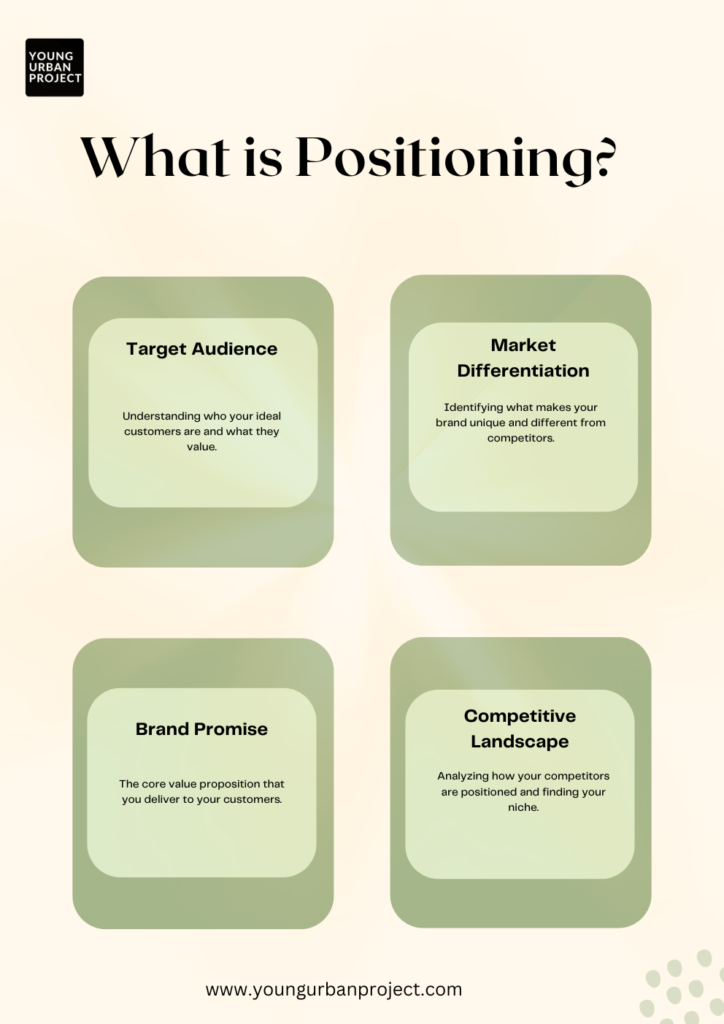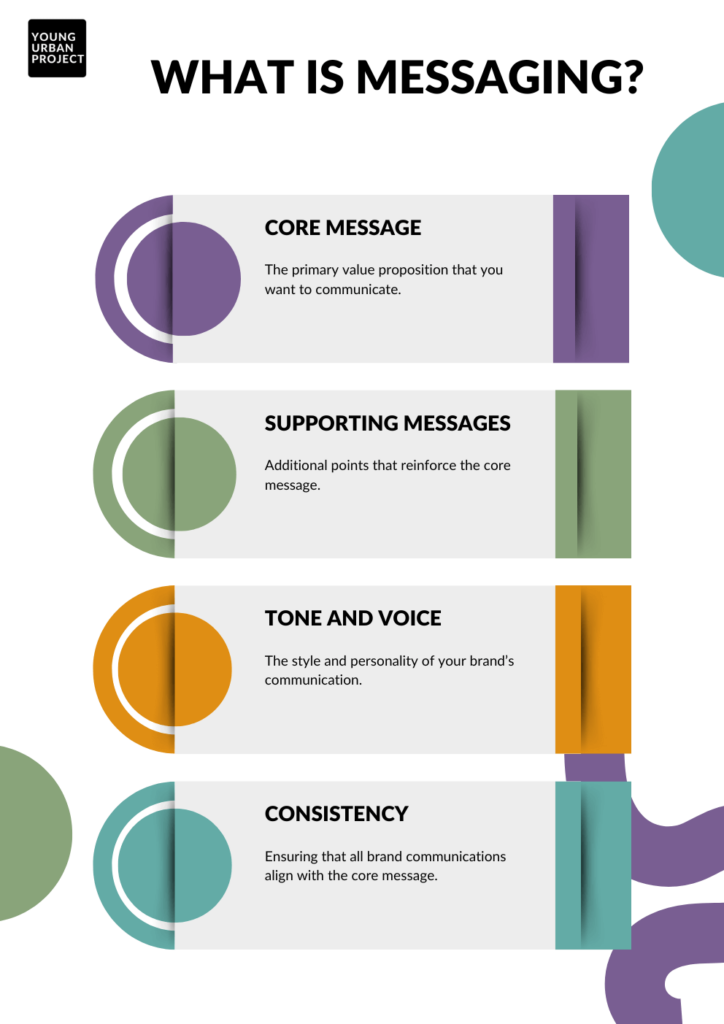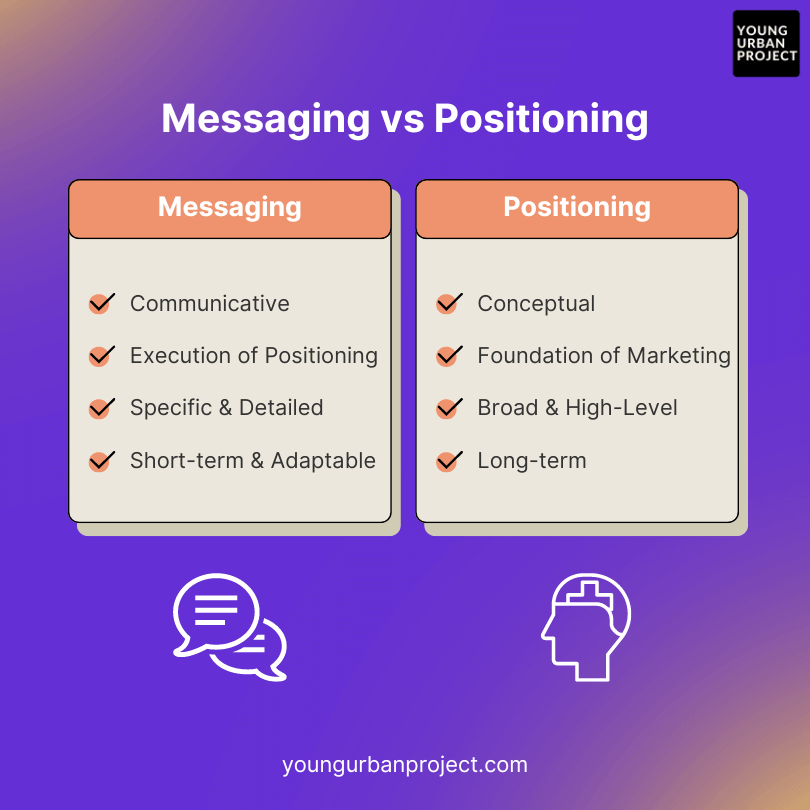While these terms are interchangeably used, understanding the difference between positioning vs messaging is vital for creating a unified and effective brand strategy. In this article, we will explore the fundamental differences between positioning and messaging, explaining their roles in marketing and how they work together to strengthen your brand.
You will also learn how positioning sets the strategic foundation, and how messaging translates this into compelling communications that resonate with your audience. Whether you’re a seasoned marketer (or Product Marketer) or new to the field, this comprehensive guide will offer valuable insights and practical advice for mastering these essential marketing concepts.
What is Positioning?
Positioning is the strategic process of defining how a brand is perceived in the minds of consumers relative to its competitors. It all comes down to establishing a distinct niche for your brand in the marketplace. Positioning involves identifying the specific benefits & attributes that make your brand different and communicating these in a way that resonates with your target audience.

Key Elements of Positioning:
- Target Audience: Understanding who your ideal customers are and what they value.
- Market Differentiation: Identifying what makes your brand unique and different from competitors.
- Brand Promise: The core value proposition that you deliver to your customers.
- Competitive Landscape: Analyzing how your competitors are positioned and finding your niche.
Also Read: Types of Positioning in Marketing
What is Messaging?
Messaging refers to the specific words and phrases used to communicate your brand’s positioning to the target audience. It’s about translating the positioning strategy into a clear, consistent narrative that resonates with your audience. Messaging encompasses all the touchpoints where consumers interact with your brand, including advertising, social media, website content, and customer service.
Key Elements of Messaging:

- Core Message: The primary value proposition that you want to communicate.
- Supporting Messages: Additional points that reinforce the core message.
- Tone and Voice: The style and personality of your brand’s communication.
- Consistency: Ensuring that all brand communications align with the core message.
What is Positioning and Why is it Important?
Positioning is the strategic process of defining how a brand, product, or service is perceived in the minds of consumers relative to its competitors. It involves identifying and communicating the unique value proposition that differentiates your offering from others in the market. Positioning is about carving out a distinct and memorable place in the market landscape that resonates with your target audience. It is something to determine even before the product launch.
Why is Positioning Important?
- Differentiation: In a crowded marketplace, positioning helps your brand stand out. It highlights your unique offering and why customers should choose you over competitors. Effective positioning creates a clear and compelling reason for consumers to prefer your brand.
- Clarity and Focus: Positioning provides clarity and focus for your marketing efforts. It defines your brand’s core attributes and benefits, guiding all aspects of your marketing strategy. This focus ensures that your messaging, branding, and marketing activities are aligned and cohesive.
- Customer Connection: Positioning helps you connect with your target audience on a deeper level. By understanding their needs, desires, and pain points, you can tailor your positioning to resonate with them emotionally and rationally. This connection builds loyalty and trust over time.
- Competitive Advantage: A strong positioning strategy gives you a competitive edge. It allows you to occupy a unique space in the market that is hard for competitors to replicate. Increased profitability and market share are possible outcomes of this advantage.
- Brand Loyalty: Effective positioning fosters brand loyalty by creating a strong, positive association with your brand. When consumers clearly understand and value what your brand stands for, they are more likely to remain loyal and advocate for your brand.
- Strategic Decision-Making: Positioning serves as a strategic guide for decision-making across the organization. It informs product development, marketing communications, sales strategies, and customer service initiatives. By staying true to your positioning, you ensure consistency and alignment in all business activities.
- Market Adaptation: As markets evolve, positioning helps you adapt to changing consumer preferences and competitive dynamics. A well-defined positioning strategy allows you to pivot and adjust your messaging and offerings while maintaining a consistent brand identity.
Differences Between Positioning and Messaging
Positioning and messaging are two critical components of a brand’s communication strategy. While they are closely related and often used together, they serve different purposes and operate at different levels of the marketing framework. Understanding the differences between positioning and messaging is essential for creating a cohesive and effective brand strategy.

1. Strategic vs. Tactical
- Positioning: Positioning is strategic. It defines the overarching perception of the brand and its place in the market. It involves long-term planning and establishes a unique brand identity that differentiates the brand from its competitors. Positioning answers the question, “What do we want customers to think of when they think of our brand?”
- Messaging: Messaging is tactical. It involves the specific words and phrases used to communicate the brand’s positioning to the target audience. Messaging translates the positioning strategy into clear, compelling communications that resonate with the audience. It answers the question, “How do we convey our positioning to our customers?”
2. Concept vs. Communication
- Positioning: Positioning is conceptual. It focuses on the idea or perception that the brand wants to own in the minds of consumers. Positioning involves defining the unique value proposition and the key differentiators that set the brand apart in the marketplace.
- Messaging: Messaging is communicative. It focuses on how to express the positioning through language that resonates with the audience. Messaging involves crafting the core message and supporting messages that convey the brand’s value proposition effectively.
3. Foundation vs. Execution
- Positioning: Positioning serves as the foundation for all marketing efforts. It sets the stage for how the brand will be perceived and guides the overall marketing strategy. Positioning informs the development of marketing campaigns, product development, and other strategic initiatives.
- Messaging: Messaging is the execution of the positioning strategy. It brings the positioning to life through specific communications and interactions with the audience. Messaging is used across various touchpoints, including advertising, social media, website content, and customer service.
4. Broad vs. Specific
- Positioning: Positioning is broad and high-level. It encompasses the overall perception of the brand and its unique place in the market. Positioning statements are typically concise and focus on the big picture.
- Messaging: Messaging is specific and detailed. It involves the precise language and phrasing used to communicate the brand’s positioning. Messaging is tailored to different channels and audiences, ensuring that the core message is consistently reinforced across all touchpoints.
5. Long-Term vs. Short-Term
- Positioning: Positioning is long-term. It defines the enduring perception of the brand and aims to create a lasting impression in the minds of consumers. Positioning should remain consistent over time, although it can evolve as the market and consumer preferences change.
- Messaging: Messaging can be short-term and adaptable. While the core message should remain consistent, the specific phrasing and emphasis can be adjusted based on the context and the communication channel. Messaging needs to be flexible to respond to market dynamics and audience feedback.
Developing a Strong Positioning Strategy
To develop a strong positioning strategy, follow these steps:
- Research Your Market: Understand the needs, desires, and pain points of your target audience. Analyze competitors to identify gaps and opportunities.
- Define Your Unique Value Proposition: Clearly articulate what makes your brand unique and why customers should choose you over competitors.
- Create a Positioning Statement: Summarize your positioning in a concise statement that communicates your brand’s unique value to the target audience.
- Test and Refine: Validate your positioning with market research and feedback. Refine it as needed to ensure it resonates with your audience.
Types of Positioning Strategies
Having a well-defined Positioning strategy helps have a consistent messaging. While the product/service can be a disruptor and be unique, the positioning can be rehashed. Below are some popular positioning strategies to choose from:
| Price | You can position your product as more affordable than other products in market. Eg: Indian electronics brand BoAt lifestyle has used this. |
| Quality | You can choose to convey that your product is higher in quality or is a luxury product. It’s a valid strategy for brands operating in a market that generally competes on price. Eg: Dyson can be an example of such a strategy. |
| User | You can target a certain type of TG, demographic or a specific use case. Eg: CGM monitors from UltraHuman are for health conscious people who minutely track their food intake and its impact on blood sugar. |
| Product Type | Shift the perception of customers by choosing an alternative category for your products. Eg: Adidas has a sub-brand called TERREX that is positioned to be the optimum footwear (and other accessories) for people who do adventure sports like hiking, and trail running. |
| Competitor | Here you can demonstrate that your product is better (directly or indirectly) than your competitor. Eg: Pepsi doing a blind taste test to show it is better tasting than Coca Cola is a great example. |
| Differentiation | In this type of strategy, you can show that your product is a totally unique offering in the target market and cannot be duplicated. Eg: Tesla’s self-driving cars are an example of this. |
Crafting Effective Messaging
To craft effective messaging that aligns with your positioning, follow these steps:
- Identify Key Messages: Define the core message and supporting messages that convey your brand’s value proposition.
- Use Consistent Tone and Voice: Ensure that all communications reflect the brand’s personality and style.
- Tailor Messages to Different Channels: Adapt your messaging to fit the specific requirements and nuances of different marketing channels (e.g., social media, website, email).
- Maintain Consistency: Ensure that all messages across various touchpoints are consistent and reinforce the core positioning.
The Importance of Alignment
Aligning positioning and messaging is crucial for brand consistency and effectiveness. When positioning and messaging are aligned, they reinforce each other and create a cohesive brand experience. Misalignment, on the other hand, can lead to confusion and weaken the brand’s impact.
Learn Product Marketing from top experts from companies like:
Google, Swiggy, Squadcast, Navi and more.

Conclusion
Understanding the differences between positioning vs messaging is crucial for anyone interested in a product marketing career (or infact any marketing career) aiming to build a strong and cohesive brand. Positioning sets the strategic foundation, defining how your brand is perceived in the market, while messaging translates this strategy into clear and compelling communications that resonate with your target audience. By mastering both, you can ensure that your brand stands out and connects meaningfully with consumers.
For those looking to deepen their understanding of these essential marketing concepts, the Young Urban Project offers a comprehensive Product Marketing Course Online. This course covers everything from market research and positioning to crafting effective messaging strategies. With live interactive classes, certifications, and guidance from top industry mentors, you will gain practical skills and knowledge to excel in the field of product marketing. Enroll now to take your marketing expertise to the next level!

